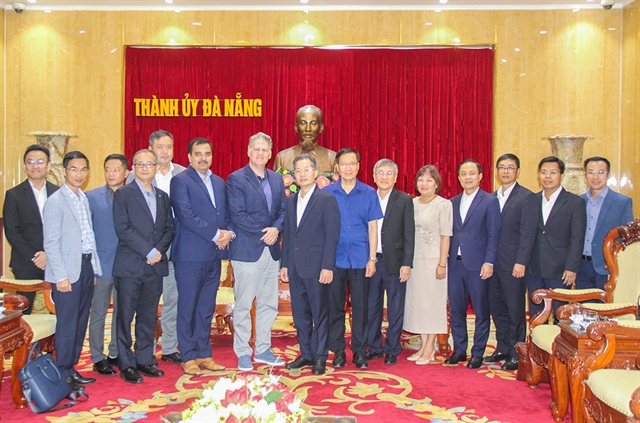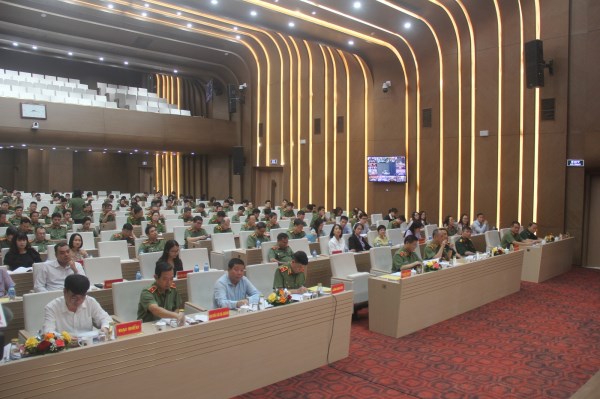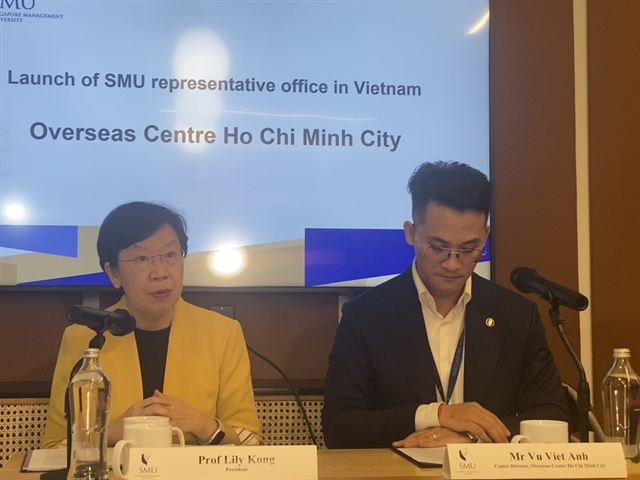 Society
Society

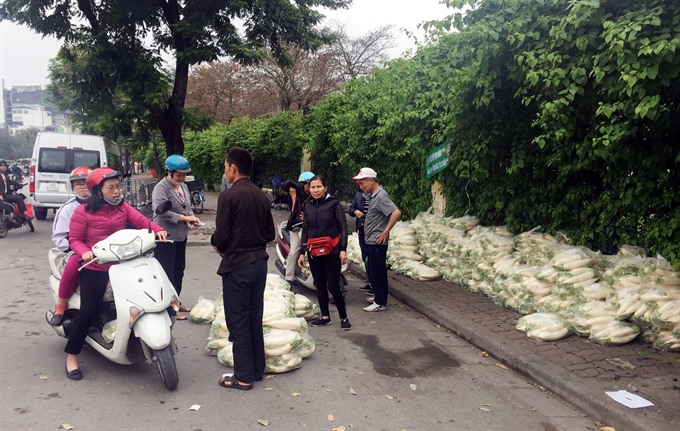 |
| White turnips grown in the outer Mê Linh District in Hà Nội are sold outside of Thống Nhất Park in the city. — VNS Photo Trương Vị |
by Mai Hiên & Nguyễn Hằng
Not any single day past when you won’t find Nguyễn Thị Sinh’s tender to her crops on her farm.
Delicately tending to her plants and harvesting the ripe ones for market is just part of her daily routine at the 360-square-metre’s of land.
But the work doesn’t stop there. Far from it. Each day she embarks on a 27 kilometre journey from her hometown in the Ứng Hòa District to Hà Đông. With her, of course, is two large baskets bursting with vegetables.
A tough way to earn a living, and one that’s hardly financially rewarding.
“Although I’ve engaged in planting vegetables for more than 30 years, I have never satisfied with income brought about by it,” said Sinh, 52, who earns around VNĐ80,000 (US$3.5) each day.
But she won’t be put off by the poor rewards.
She added: “I don’t want to quit farming and will work for my whole life until my health strong enough”.
Sinh is among millions of Vietnamese farmers whose lives depend on agricultural production.
Yet, they were affected by the problem of having bumper crops but gaining small benefits due to plummet price which occurs almost every year.
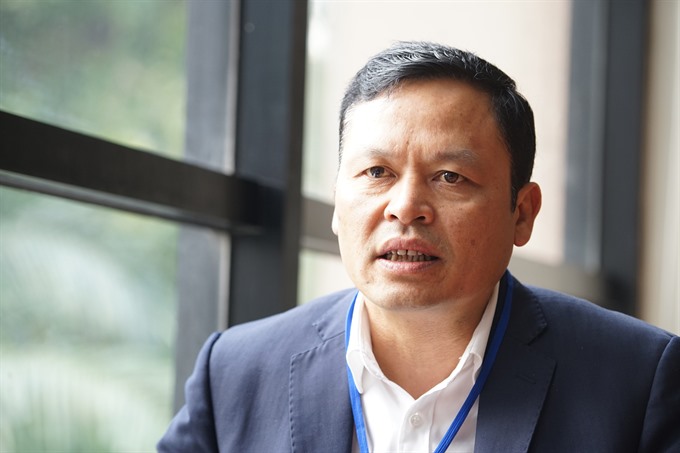 |
| Tạ Văn Tường, deputy director of Hà Nội’s Department of Agriculture and Rural Development. — Photo Tuấn Kiệt |
According to Tạ Văn Tường, deputy director of Hà Nội’s Department of Agriculture and Rural Development, the adoption of supply chain will bring about economic efficiency as it reduces some expense as animal feed and veterinary medicine.
In addition, it helps meet the demand of enterprises and stabilise price on the market.
The adoption of supply chain requires the careful examination from purchasing the material, production process and packaging the products to ensure the quality.
Farmers form themselves into a co-operative or collective unit in their production. This means they are responsible for products’ collection and consumption.
Statistics from the department showed that it would help increase products’ value by between 15-20 per cent compared to normal ones as well as expanding markets by connecting with distributors and convenience stores all over the country.
Tường admitted that most of agriculture products were produced in the traditional method.
Due to small-scale and scattered production, farmers don’t either pay attention to market demand or apply good agricultural practice.
Consumers purchase the product which often doesn’t have trademarks via traders so it was not easy for them to believe its quality.
In addition, the rate of processed agro-products in the city remained very low, he said, believing farmers should diversify their products by processing them in a variety of ways apart from simply providing fresh produce.
Hà Nội currently has 65 supply chains of safe food. Of these, the meat-related supply chain has attracted nearly 3,000 households and 100 enterprises and individuals.
Every day, the chain provide 57.4 tonnes of pork meat, 14.3 tonnes of poultry, 296,000 of eggs and about 78 tonnes of fresh milk.
With 5,000 ha for safe vegetable, it has capacity to produce 350,000 tonnes annually, meeting 60 per cent of the city consumers’ demand.
Regarding to channel of consumption, only 5 per cent of safe agricultural products with certificate of origin were bought by enterprises while the rest were put on sale at traditional markets.
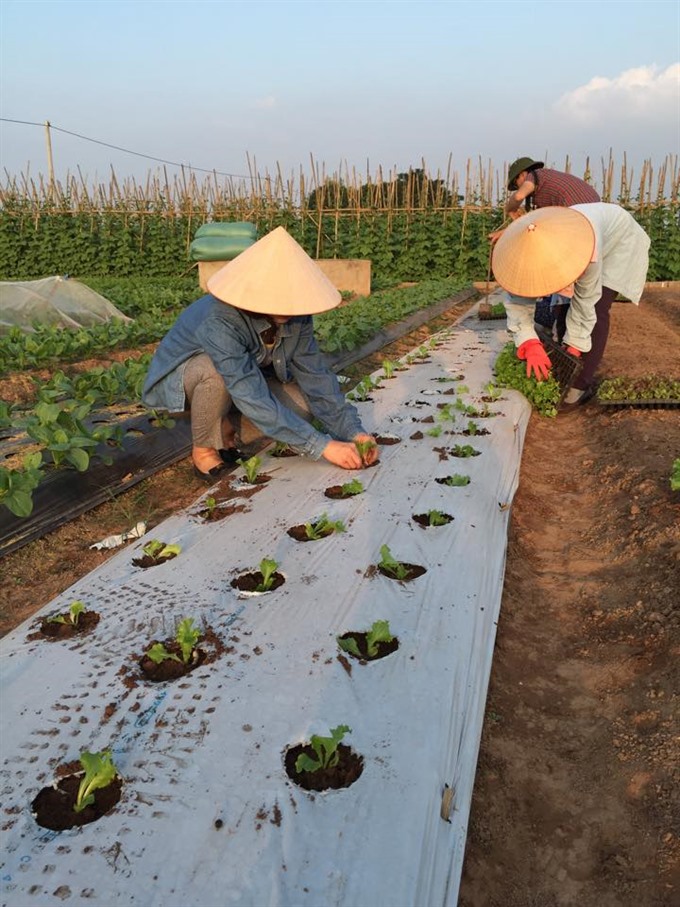 |
| Women farmers in the Chúc Sơn Town in the outer Chương Mỹ District in Hà Nội take care of the vegetables. — VNA/VNS Photo Đỗ Phương Anh - TTXVN |
Challenges
Tường pointed out several challenges that tackle the development of supply chain in Việt Nam. First, the system of convenient stores in our country is still limited.
It is estimated that the country only had one convenient store per 69,000 people, he said. Compare this to Japan which has one per 1,800 people, one per 2,200 in South Korea and one for every 20,000 in China.
With the current trend, the convenient-store system will become the main channel distributing foods and farm produce to customers, he said, meaning if the system is more broadened in the future, it will certainly boost the development of supply chain in the country, he said.
Additionally, supply chain is actually considered as a new model in Việt Nam although we already set initial steps to operate it since 2012, he said.
For example, Hà Nội has successfully built trademarks for chicken products in Sóc Sơn, Ba Vì and Sơn Tây and duck products in Vân Đình. They are expected to become major products distributed in the domestic market in the near future, he said.
But it takes time for both producers and customers to catch up with the trend of supply chain, he said.
Causes
Incomplete supply chain is blamed for the story of Tráng Việt Commune, where local farmers reportedly suffered a big loss because their turnip price was sharply down lately.
It was only about VNĐ500-1,100 (2-4 cents) per kilo before a range of supermarkets joined hands to “save” the turnips few days ago, he said.
Although the commune has nearly 300ha planting turnips and they has also worked with 60 traders to distribute the fresh vegetable to traditional markets in the city. Nevertheless, the turnip yet to be labeled the made-in-Vietnam origin so that it failed to win the full attention of customers, he said.
Only when mass media reported about the commune and its turnips, the customers knew that there was a good-quality one growing in the commune, he said.
Nguyễn Hồng Sơn, director general of the Plant Cultivation Department agrees. He said the main reason leading to the steep drop in the vegetable prices was the lack of proper planning, linkage between producers and market demand and small-scale production.
"Although the state has planning, taking into account the supply and demand factors as well as market consumption of products, but the spontaneously involving in the production make it impossible for the implementation of planning,” he said in the Dân Việt online newspaper.
“At the same time, because most of the involved households are operating in small scale, posing challenge to adjust planting scheme," Sơn was quoted by Dân Việt online newspaper as saying.
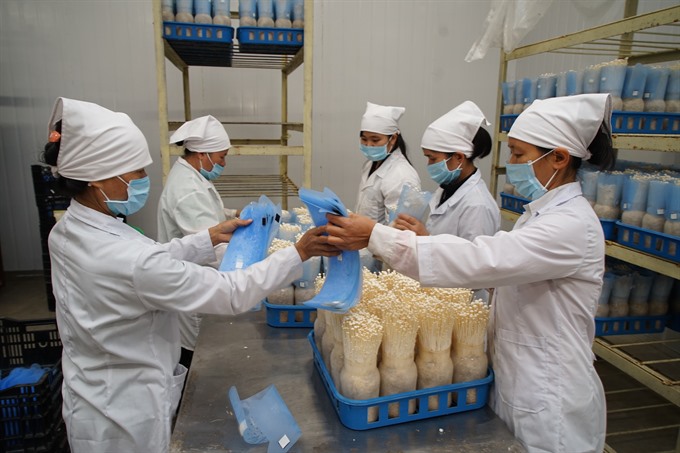 |
| Kinoko mushroom – a product favoured by Hanoians – is packed at Thanh Cao Kinoko Import and Export Company Ltd in Hà Nội’s Mỹ Đức District. – Photo Tuấn Kiệt |
Solutions
But how can things improve? Sơn said, it was necessary for farmers to have knowledge of the market.
“Before planting any plant or raising any animals, farmers should learn about market information as well as its planning,” he added. “Farmers need to consider whether their crops have grown in many areas, avoiding mass production.”
On the other hand, the consultation of local government and social organisations was also very important, he said. These organisations should provide information for local residents on the planning and calling them to implement in accordance with the approved plan.
Tường also gave some suggestions to farmers to avoid the problem of having bumper crops but gaining small benefits. The first solution he said is running a complete supply chain.
Regarding to this special case like Tráng Việt, it was necessary for farmers there to process dried and salted turnips. Then they could lure investment capital from companies to buy advanced equipment, he said.
It will both help consume the redundant volume and create a product for export, he said. For example, there is a trade village specialised in processing dried turnips in the north-eastern province of Quảng Ninh’s Quảng Lợi Commune.
At first, they processed due to redundance and sold for local people. But later, they received positive feedback from customers then they decided to process more to sell to tourists.
“I think Tráng Việt should learn from the commune’s model,” he said.
From the side of the city’s agricultural department, it plans to issue two instructions in the coming time.
The first instruction is how to smoothly run a supply chain with many lessons drawing from typical examples. And the second is provided authorised agencies more skills to manage food hygiene and safety under the supply chain model, he said.
It is expected that with the development of supply chain in the city, the lives of farmers like Sinh will be improved soon. — VNS



